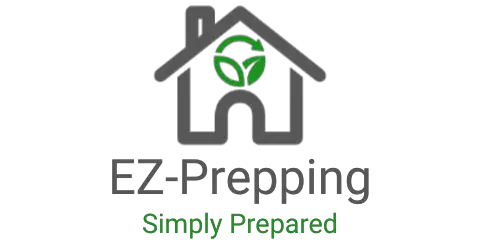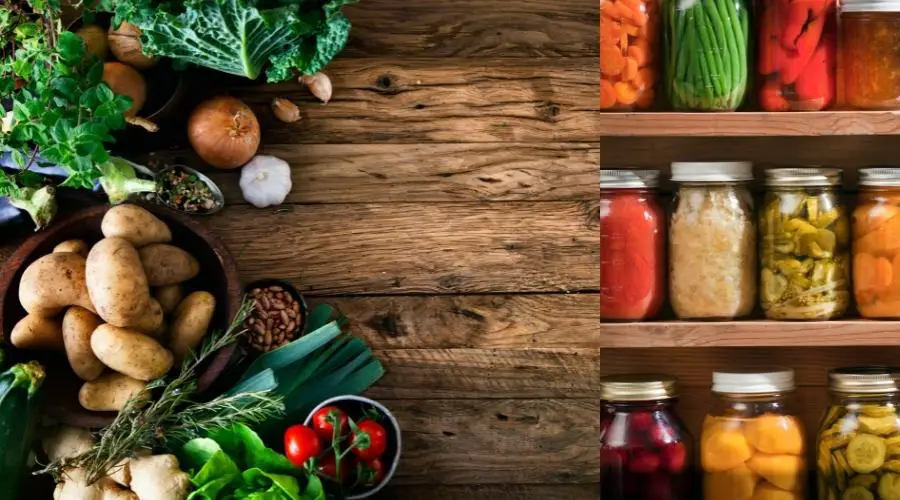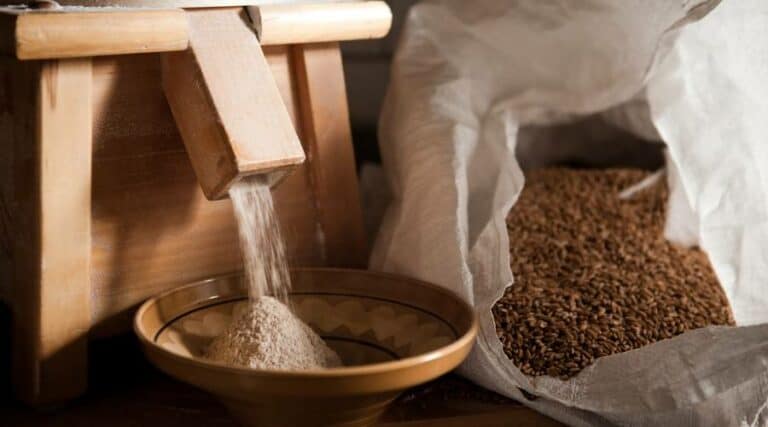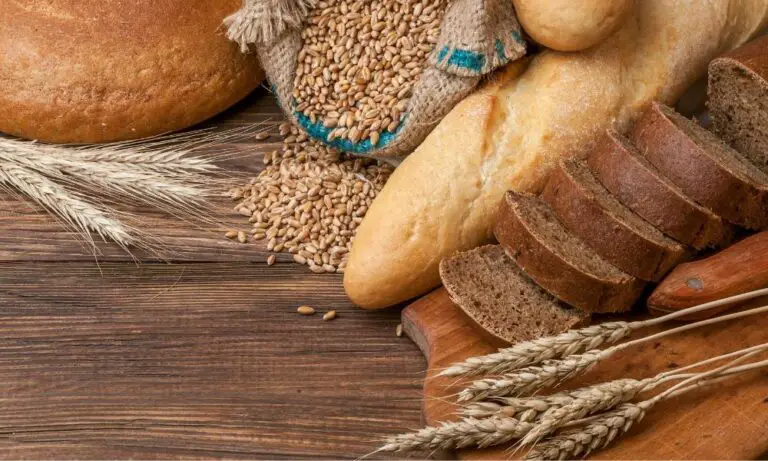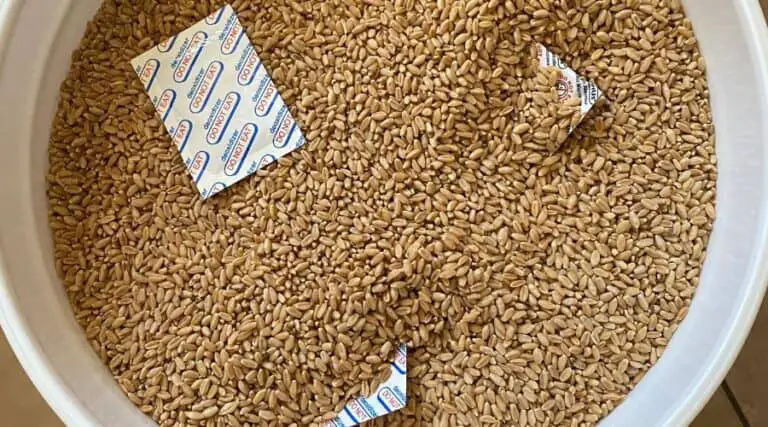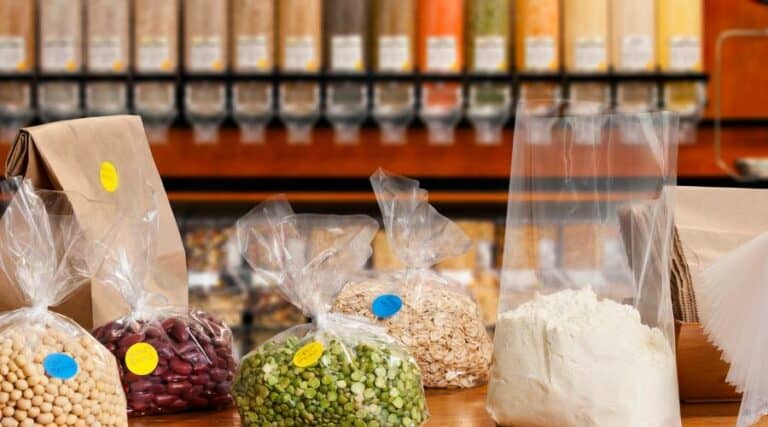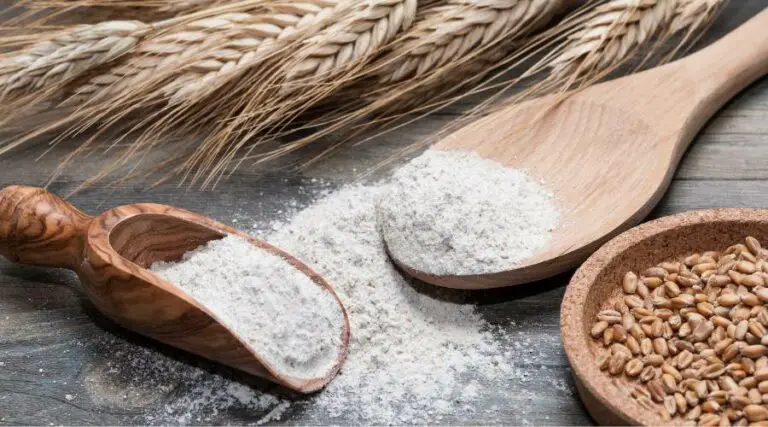What Foods Can & Cannot be Pressure Canned: Complete List
Pressure canning is the only safe method for canning low-acid foods which are foods with a pH of greater than 4.6. Because of the danger of botulism, low-acid foods must be canned in a pressure canner which means that the water (boil) bath canning method is not safe and should not be used for low-acid foods.
The types of foods that can be pressure canned include vegetables, soups, stews, stocks and broths, beef, poultry, fish, wild game meat, chili, and baked beans. Foods that cannot be pressure canned include milk, cream, dairy products, coconut milk, flour, corn starch, rice, pasta, starchy foods, and eggs.
We will help you know what foods can and should be pressure canned by providing a long list of foods and links to recipes below. Additionally, we provide a list of foods that should not be pressure canned.
“Low acid foods require a higher temperature when processing than can be reached by placing them in jars immersed by boiling water. To kill harmful bacteria (such as those associated with botulism) use of pressure canning ensures the safety of preserved low-acid foods. Foods that have an acidity, or pH level, of 4.6 or higher. The temperature which must be reached and maintained (for a specified amount of time) to kill the bacteria is 240°F. This temperature can be reached only by creating steam under pressure.”
USU Canning Experts
As you pressure can the various food ideas from our list make sure you follow safe canning procedures. The NCHFP suggests that you follow the guidelines that are outlined in Using Pressure Canners and Principles of Home Canning.
Types of Foods that Can be Canned in a Pressure Canner include:
- Vegetables
- Soups and Stews
- Stocks and Broths
- Beef
- Poultry
- Fish
- Wild Game Meat
- Chili
- Baked Beans
Each of the above types of foods must be pressure canned in order to be safely preserved for long-term food storage and safely consumed months later. Many foods can be pressure canned making it worth owning your own pressure canner.
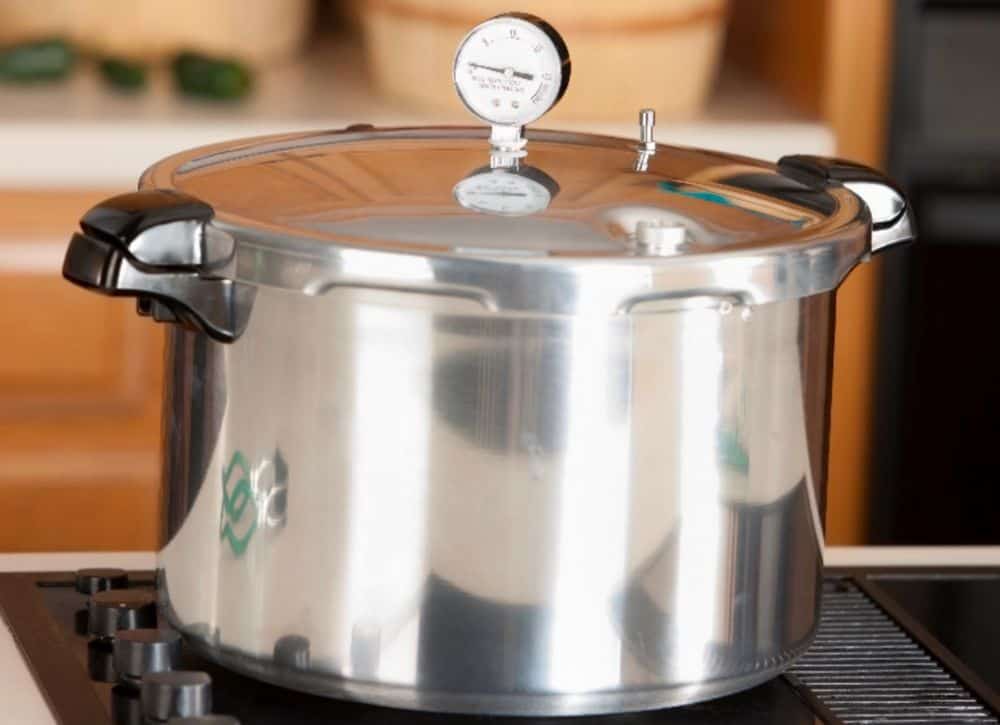
Below you will find long lists of foods under each type of food that can be pressure canned. See also foods that last a long time without refrigeration.
Vegetables (home garden or store-bought)
Vegetables that can be pressure canned include:
- Asparagus, Spear, or Pieces
- Beans or Peas – Shelled, Dried, All Varieties
- Beans, Baked
- Beans, Dry, With Tomato or Molasses
- Beans, Fresh Lima–Shelled
- Beans, Snap and Italian – Pieces, Green and Wax
- Beets – Whole, Cubed, or Sliced
- Carrots – Sliced or Diced
- Corn – Cream Style
- Corn – Whole Kernel
- Kale
- Mixed Vegetables
- Mushrooms – Whole or Sliced
- Okra
- Onions
- Parsnips
- Peas, Green or English – Shelled
- Peppers
- Potatoes, Sweet – Pieces or Whole
- Potatoes, White – Cubed or Whole
- Pumpkins – Cubed
- Spinach
- Green Beans
- Other Greens
- Succotash
- Swiss Chard
- Tomatillo
- Turnip Greens
- Winter Squash – Cubed
Pressure canning your garden produce (particularly vegetables) is a great way to preserve your harvest so that you can enjoy it all year around. This is particularly helpful with the unknown and unpredictable food shortages, supply chain issues, and rising costs of food.
We like a variety of food storage so we also dehydrate, freeze dry, and freeze our vegetables in addition to pressure canning.
For safety, I always find it best to follow recipes and specifics when canning vegetables and other foods.
Vegetable Pressure Canning Recipes and Procedures
The National Center for Home Food Preservation offers a long list of pressure canning vegetable recipes including Asparagus, Beans, Beets, Carrots, Corn, Mixed Vegetables, Mushrooms, Okra, Peas, Peppers, Sweet or White Potatoes, Pumpkins and Squash, Spinach and Other Greens, and Tomatillos.
Addition Vegetable Recipes
- Canning Green Vegetables such as Spinach, Turnips, Kale, Swiss Chard – Pick Your Own
- Canning Tomatoes (water bath or pressure canning) – Practical Self Reliance
- Canning Parsnips – New Life On A Farm
Soups and Stews
Soups and Stews that can be pressure canned include:
- Mixed Vegetable Soups
- Meat and Vegetable Soups
- Stew Variations
- Taco Soup
Pressure canning a variety of soups and stews is a great way to store a variety of meats and vegetables. I really like that it gives you control over what you put in your soups and stews.
Additionally, it takes the planning work out of meal preparation, just pull a jar of pre-pressure canned soup and you have dinner!
Soups and Stews Pressure Canning Recipes
- Soups – National Center for Home Food Preservation
- Meat and Vegetable Soup – National Center for Home Food Preservation
- Canned Carrot and Fennel Soup – Healthy Canning
- Canning Vegetable Beef Soup – Simple Family Preparedness
Stocks and Broths
Stocks and broths that can be pressure canned include:
- Chicken Broth or Stock
- Beef Broth or Stock
- Vegetable Broth
- Bone Broth
- Fish Stock
- Organ Meat stock
- Pheasant Stock
- Pork Stock
- Shrimp Stock
Broth is incredibly versatile and provides the start of various different homemade meals. We use beef, chicken, vegetables, and other broths all the time in various homemade meals.
It is quite satisfying to pressure can your own broths and stocks and they can be stored for months. Having a supply of broth on hand helps cover a wide range of recipes.
Broth and Stock Pressure Canning Recipes
- Meat Stock – National Center for Home Food Preservation
- Chicken or Turkey Stock – National Center for Home Food Preservation
- Canning Beef Stock – Grow a Goodlife
- How to Can Homemade stock or Broth – The Prairie Homestead
- Canning Shrimp Stock – Canning and Cooking at Home
- Pheasant Stock – Hunter Angler Gardener Cook
Meat Products (Beef, Poultry, Pork, etc.)
Beef, poultry, pork, and other meats that can be pressure canned include:
- Beef
- Pork
- Chicken
- Rabbit
- Turkey
- Venison
- Meat Stock (Broth)
We like to buy our meat products in bulk and store them in the freezer, freeze dry, dehydrate, and pressure can them. The price of meat continues to trend up so pressure canning meats in various recipes has relieved freezer space and diversified our food storage.
Pressure canning meat is particularly helpful if you like to hunt, raise your own animals, or purchase bulk meats like us.
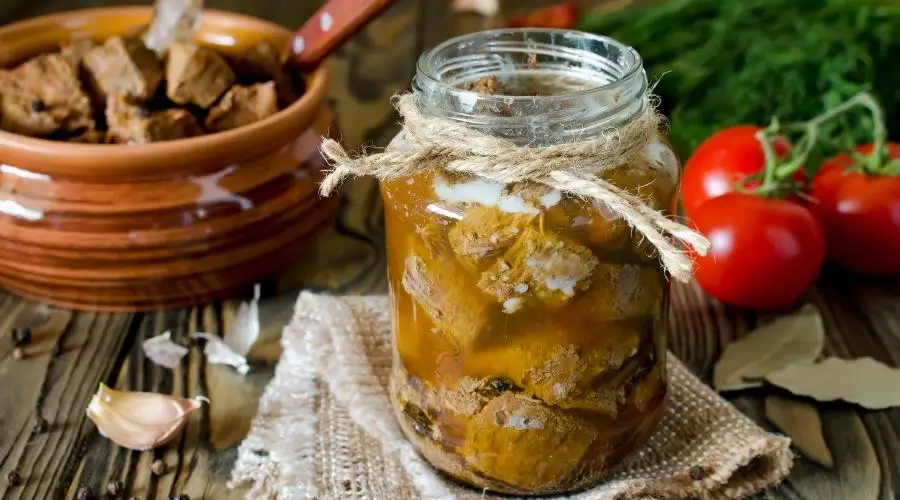
Meat Pressure Canning Recipes
- Canning Beef, Lamb, Pork, Veal, Venison, or Bear – National Center for Home Food Preservation
- Canning Chicken or Rabbit – National Center for Home Food Preservation
- Pressure Canning Beef – Practical Self Reliance
Seafood and Fish
Seafood that can be pressure canned includes:
- Clams
- Crab Meat, King and Dungeness
- Salmon
- Trout
- Tuna
- Other Fish
- Fish, Smoked
- Oysters
- Shrimp
Seafood is not one of my favorite foods, however, it is a healthy source of protein and a good option for pressure canning.
It is very important when canning fish or other seafood that you follow good recipes. Pressure canning fish is more complicated than canning other meats so you should find reputable, quality recipes and follow them closely!
Fish and Seafood Pressure Canning Recipes
Below is a list of reputable recipes that you can follow.
- Canning Fish – National Center for Home Food Preservation
- Canning Tuna – National Center for Home Food Preservation
- Canning Crab Meat, King and Dungeness – National Center for Home Food Preservation
- Canning Oysters – National Center for Home Food Preservation
- Canning a variety of Seafood – Washington State University
- Canning Trout – Simply Canning
- Canning Smoked Fish – Pacific Northwest Extension
Wild Game Meat
Wild game meat that can be pressure canned includes:
- Goose Meat
- Elk and Deer (Venison)
- Moose
- Caribou
- Quail
- Game Birds
- Rabbit
- Squirrel
- Turtle
- Bear
If you or anyone in your family are hunters then pressure canning wild game meat is a great way to preserve and store meat every year after hunting season. I have some family and friends that love canning their deer and elk meat, in addition to freezing and drying it for jerky, because it is very difficult to fit all of it in a freezer.
Pressure canning wild game meat can be a game-changer to diversify your types of food storage in addition to freezing, dehydrating, and freeze-drying.
Pressure Canning Wild Game Meat Recipes
- Canned Canada Goose Meat – Cornell University
- Canning Elk, Moose, or Caribou – The Canning Diva
- Canning Chicken or Rabbit – National Center for Home Food Preservation
- Canning Quail and Other Game Birds – On Big Turtle Creek
- Canning Turtle – Life With A Good Wife
- Canning Venison Cubed and Raw Packed – Simply Canning
- Canning Squirrel – Meats & Sausages
- Canning Bear Meat – Montana Outdoor Radio Show
Chili and Baked Beans
Chili and Baked Beans that can be pressure canned include:
- Homemade Chili Variations
- Baked Beans
Pressure canning chili and beans are a great addition to your food storage along with soups. Additionally, chili often provides a more hearty meal than many soups.
Beans can take hours to simmer on the stove but pressure canning takes much less time and after the beans are canned they can be ready to use quickly whenever needed.
Chili and Bean Pressure Canning Recipes
- Home Canned Chili – Healthy Canning
- Pressure Canning Chili Con Carne – The Daring Gourmet
- Chili Con Carne – National Center for Home Food Preservation
- Beans, Baked – National Center for Home Food Preservation
Foods that Cannot be Canned in a Pressure Canner
Be aware that not everything is safe for canning, even in a pressure canner. Some foods, including the list below, are not safe for home canning, regardless of the method.
Foods that cannot be pressure canned include:
- Milk
- Cream
- Butter
- Other Dairy Products
- Coconut Milk
- Flour
- Corn Starch
- Other thickeners (Canning Clear Jel is the only Exception)
- Rice
- Pasta
- Starchy Foods
- Eggs, including pickled eggs
- Eggplant, Artichokes, and Olives (preserve by pickling instead)
- Candy (caramel, marshmallows, etc.)
Pressure Canning Tips, Procedures, and Safety
In pressure canning, jars of food should be placed upright in 2 to 3 inches of water in a pressure canner and then ultimately heated to a temperature of at least 240°F. This temperature can only be reached in a pressure canner.
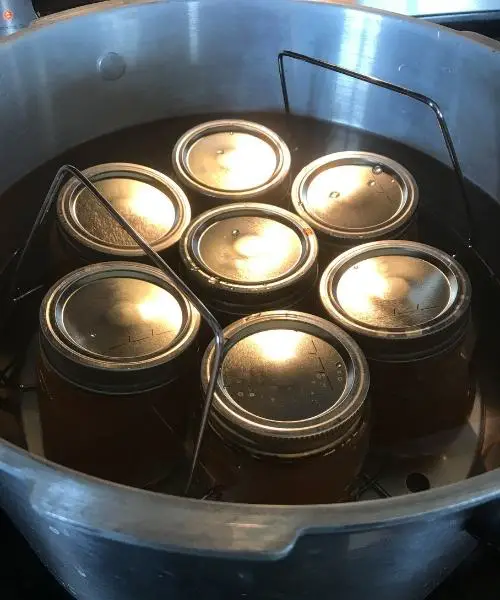
Heat the canner to boiling and exhaust steam from the canner for 10 minutes before adding the weight or closing the petcock.
Add weight or pressure regulator and adjust the pressure based on your altitude.
Allow pressure to rise and maintain at the level that is called for in the recipe you’re following by adjusting the heat. If the pressure goes below recommended pressure at any time during processing, reset your timer to zero and restart the entire processing time.
After processing time is complete, remove the canner from heat and allow the canner to cool naturally to 0 pounds pressure. Wait 2 minutes and remove the weighted gauge or pressure regulator. Wait 10 more minutes before removing the lid.
WARNING
Low-acid vegetables MUST be processed in a pressure canner to minimize the risk of food spoilage and Botulism.
Canning at High Altitudes:
As altitude increases, water boils at lower temperatures. Therefore, the canning pressure must be increased to ensure a safe product.
Dial Gauge Canner: For altitudes of 2,001 to 4,000 ft. process at 12 lbs. of pressure for the recommended time.
Weighted Gauge Canner: For altitudes above 1,000 ft. process at 15 lbs. of pressure for the recommended time.
Happy Pressure Canning and remember always to follow safety procedures carefully when pressure canning. Only follow recipes from reputable sources so that you end up with quality food storage that you can feel confident using!
